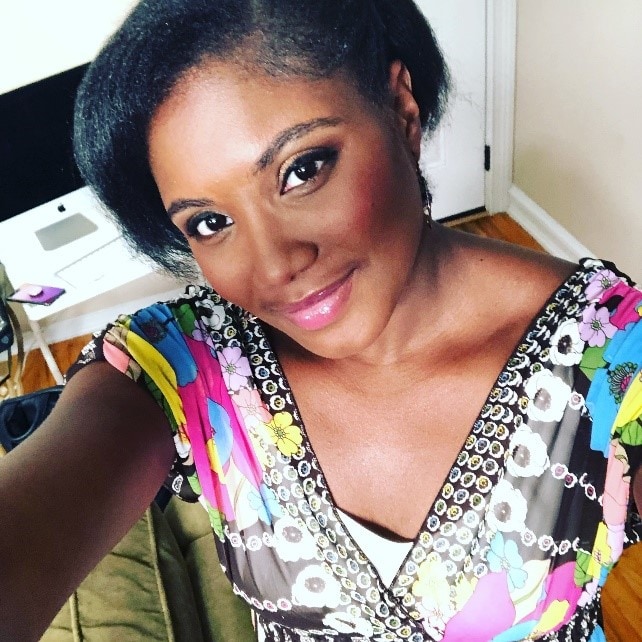At a glance
Aaron Nicole's experience with sickle cell disease (SCD) began with her diagnosis as an infant. She suffered many complications, which led to multiple operations to treat her condition. Read more about Aaron Nicole's journey, including her experience with a bone marrow transplant.

Aaron Nicole's Story
Aaron Nicole Washington is 25 years old and a sophomore in the Georgia Tech Excel Program, a program that gives people with developmental issues a chance to experience college life. Aaron Nicole is also a motivational speaker who inspires audiences with her story of being the first successful nonmatched bone marrow transplant for SCD.
Aaron Nicole's sickle cell diagnosis
Aaron Nicole was first diagnosed with SCD as an infant. Her diagnosis came as a complete surprise. At the time, her parents were not aware of anyone else in her family who had SCD. Her parents were frightened when Aaron Nicole was diagnosed because they didn't know much about SCD and were afraid they wouldn't know how to take care of her properly.
Physical impact of SCD
Having SCD nearly killed Aaron Nicole. She experienced one devastating medical complication after another. She had her first episode of pain, called a sickle cell crisis, at 8 months old and her first stroke at 8 years old. Her doctors told her she would not live to see her 13th birthday.
She was diagnosed with acute chest syndrome, a common complication of SCD that can result in lung injury, trouble breathing, low oxygen to the rest of the body, and possibly death. Throughout her early childhood, she missed school frequently to go to the hospital for blood transfusions every 2 weeks. The blood transfusions resulted in an additional medical complication called iron overload, a build-up of excess iron in the organs of the body. To balance out the iron levels in her body, she had to have a procedure called chelation therapy.
Finding a potential cure, but facing more complications
The only known potential cure for SCD is a bone marrow transplant, and the procedure was still considered experimental.A Aaron Nicole and her family were willing to take the risk, as they had so much to gain if the procedure proved a success. Aaron Nicole's family members were tested to identify a match for her, and fortunately her oldest sister, Tayla, was a close match. Aaron Nicole successfully underwent the procedure at age 12! Her SCD was cured.
Her life improved dramatically from that point forward, but her journey did not end there. Aaron Nicole began to have epileptic seizures. She tried more than 20 different types of medicines to control the seizures until she found one that worked. At 13 years old, Aaron Nicole experienced another stroke that made her lose her memory. She forgot how to walk and talk, and even had no memory of herself and her family. She had to have brain surgery to remove her right frontal lobe due to the damage she sustained from her strokes. It wasn't until after this brain surgery that Aaron Nicole finally got some relief. Thanks to the surgery and to a seizure medicine that works, she has been seizure-free for the past 5 years.
Be the Match
Emotional impact of SCD
So, what was all of this like for Aaron Nicole growing up? In a word, stressful. Aaron Nicole said she felt like she was a huge burden on her family. Her mom lost many jobs because of the amount of time she needed to devote to taking care of her. Aaron Nicole always knew she was different. She had to walk to school with an oxygen tank because she couldn't breathe very well and got picked on by her peers, who called her names. "I was a bully's paradise," Aaron Nicole said sadly.
Attending a summer camp for kids with SCD helped Aaron Nicole make friends and realize that she was not alone. "It was great knowing that I'm not an outsider. There are thousands of people with sickle cell disease in the world, and a couple out there just like me," she said.
Not being able to do the same things that others her age could do also discouraged Aaron Nicole. Growing up, she was unable to enjoy playing sports like her brothers and sisters. Aaron Nicole always wanted to be a ballerina but couldn't because of her condition. Unlike her siblings, she spent a lot of her time at the hospital. As a result, Aaron Nicole had to retake classes, including repeating the 8th grade, as well as having to move to different schools to be closer to her hospital. Her memory and reading comprehension were impacted by the strokes, and she needed to go to a school that could help her learn. She remembers asking her parents, "Why me?" Today, though, Aaron Nicole is doing much better and enjoying life more.
Lessons learned
When asked what advice she would have for others, Aaron Nicole offered the following:
"It's your body. Sickle cell disease doesn't control you. You control sickle cell disease."
And when asked for tips specifically for parents, she said this:
"Don't treat your child like they are broken. Most of the beautiful things in the world are broken. Broken and beautiful."
CDC would like to thank Aaron Nicole for sharing her story.
- This story was published before the FDA approved other treatments such as gene therapies. For more information on current treatments available for people with SCD, click here.
